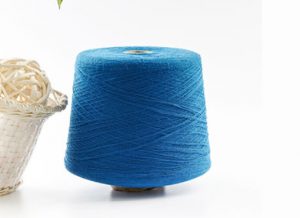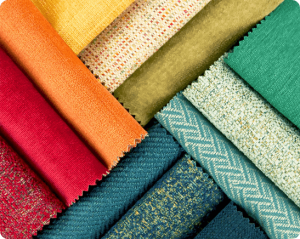Much like the concept of organic foods introduced two decades ago, the concept organic cotton is also intriguing the Global markets and industries. Although it has taken a while to gain prominence as it’s correlation with daily human life is not as direct. We do not consume cotton fiber and hence we might not be very careful with our choice in that respect.
Gradually Mother Nature’s wakeup call has motivated activists to spread awareness regarding Organic cotton and industrialists are also keen on investing into sustainable goods and technology.
Apart from being one of the most widely grown crops in the world, the cultivation of conventional cotton can be extremely chemical-intensive. These chemicals result into immense soil and water pollution and it has also adversely affected the health of the farmers who reside in the vicinity of these cotton fields. According to the Environmental Protection Agency, they are one of the most harmful and toxic chemicals.
The problem magnifies if we focus on the situation in the developing nations. The Urban population majorly serves as the end consumer, but they are highly ignorant about these environmental threats. These nations also lack credible institutions that can spread awareness and protect property rights of the rural folk. The occupational hazards of cotton cultivation results into tragic deaths of thousands of farmers across the globe.
The precedence of Organic Cotton not only provides us with safe and toxin-free raw materials, but also encourages the protection of basic human rights.
So, What is Organic Cotton?
Organic cotton is cultivated using farming techniques and fertilizers that are natural, hypoallergenic and safe. They have a low impact on the environment and cause no damage to the farmers or consumers involved in the process.
Organic production systems maintain the soil fertility and reduce the usage of toxic pesticides and fertilizers. What’s more? They also help in building a diverse agricultural ecosystem. Third-party organizations and authorities verify that all the standards of sustainability are met and then certify the cultivation centers for further credibility and recognition. In addition, federal regulations across the globe have prohibited the usage of the genetically engineered seeds for the purpose of organic farming. These standardizations and regulations ensure quality raw materials and sustainable trade and consumption across all the three economic sectors.
Why use Organic Cotton?
- Reduces Carbon Footprints: Toxic chemicals are strictly avoided during the cultivation of organic cotton. It does not affect the soil adversely and prevents air pollution. It uses 71% less water and 62% less energy than the cultivation of conventional cotton. Conventional cotton equips about 16% of the world’s insecticides and 7% of pesticides out of which majority are potential threats to human health and environment.
- Is Futuristic: It is predicted that by 2025, two-thirds of the world’s population may face a serious water shortage. However, organic cotton is majorly rain-fed, which reduces the immense pressure on the local water sources. The absence of chemicals also means prevents water pollution. Fun fact: It takes 2,700 liters of water to produce a t-shirt out of conventional cotton.
- Has socio-economic benefits: The cultivation of Organic Cotton, promotes a safe working environment for the farmers. It encourages the farmers to stay in the best state of their health and fitness and they can grow more than a single crop to supplement their income.
Why choose Organic Cotton over conventional cotton?
To illustrate the merits of preferring organic cotton over conventional cotton, we have drawn a quick comparison between the two materials with respect to various important factors.
| Organic Cotton | Conventional Cotton |
Soil Preparation | Uses naturally fertile soil, which is maintained with regular crop rotation. | Uses soil which is treated with harmful pesticides, fertilizers and insecticides. |
Choice of Seeds | Uses natural and untreated seeds that are not hybrid or genetically modified. | Seeds are treated with fungicides or insecticides and there are high chances that they are GMOs. |
Weed Control Processes | Tap crops are used to attract agricultural pests and beneficial insects and bugs. | Uses fertilizers and pesticides and insecticides that can be cancer-causing. |
Harvesting Procedures | Encourages natural defoliation through water management. | Defoliation occurs with the help of toxic chemicals. |
Production Methods | Stabilizes Warp fibers which use non-toxic cornstarch. | Uses toxic waxes to stabilize wraps. |
Whitening Substances | Uses safe peroxide that does not cause allergies or harm environment. | Employs Chlorine bleaching which creates toxicity in the environment and is also harmful for the consumer. |
Material Finish | Soft scour is induced in the warm water with the help of soda ash, with a pH maintained at 7.5 to 8. | Uses synthetic surfactants and additional harmful chemicals such as formaldehyde |
Dyeing Materials | Uses fiber-impacting natural colors dyes which have a low metal and sulfur content. | Dyeing takes place at high temperature and uses heavy metal and sulfur infused materials. |
Printing Process | Uses low-impact, water-based inks or pigments that do not contain heavy metals. | Uses Pigments that can be petroleum based and can contain heavy metals. In an event of spill, causes heavy water pollution. |
Price To Pay | Initial cost is a lot more expensive than conventional cotton. However, at the long run produces highest quality of materials and restores the important natural resources. | Reduces the production costs drastically, but trades against the precious human lives and most importantly, environmental safety. |
What are the Global Trends in Organic Cotton?
The 2018 Organic Cotton Marketing Report drew analysis on the trends surrounding organic cotton. The data obtained was mainly focused on the industry’s supply sector. It considered factors such as production volumes, availability and emerging fiber trends in the Organic Cotton Market.
The 2018 OCMR displayed that the global organic cotton production has increased by 10% over the past one year, with the largest volumes of production coming from India, China, Turkey and Kyrgyzstan. While organic cotton still occupies less than 1% of global cotton production, interestingly many countries have growth in double-digits.
The increasing global demand for organic cotton production is being addressed by various clothing and lifestyle brands, which are setting new targets and committing to a fair share of investment in organic cotton.
Organic Cotton and Fair Trade:
Fairtrade policies are essentially a series of credibility labels and certifications that focus on improving the working and living environments of small land holders and cultivators in the developing nations. However, Fairtrade standards also include various environmental criteria’.
Organic cotton is explicitly linked to eco-friendly agricultural methods and policies. They also lay primary focus on human rights and health security standards. Hence, fair trade policies and organic cotton production complement each other harmoniously. Combining the two is a way of strengthening the farmers and their families in a more comprehensive way which ultimately improves their socio-economic positions and leads them to the highest standards of living.




